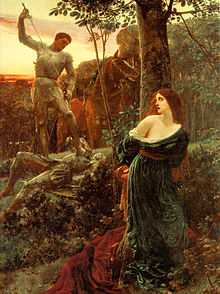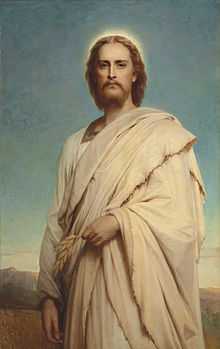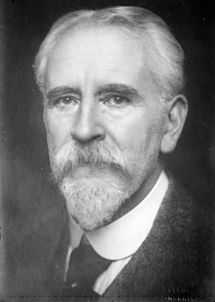Frank Dicksee
| Sir Frank Dicksee | |
|---|---|
|
Frank Bernard Dicksee | |
| Born |
27 November 1853 London, England, UK |
| Died |
17 October 1928 (aged 74) London, England, UK |
Sir Francis Bernard Dicksee PRA KCVO (London 27 November 1853 – 17 October 1928) was an English Victorian painter and illustrator, best known for his pictures of dramatic literary, historical, and legendary scenes. He also was a noted painter of portraits of fashionable women, which helped to bring him success in his own time.
Life

Dicksee's father, Thomas Dicksee, was a painter who taught Frank as well as his brother Herbert and his sister Margaret from a young age. Dicksee enrolled in the Royal Academy in 1870 and achieved early success. He was elected to the Academy in 1891 and became its President in 1924.[1] He was knighted in 1925, and named to the Royal Victorian Order by King George V in 1927.
Dicksee painted The Funeral of a Viking (1893; Manchester Art Gallery), which was donated in 1928 by Arthur Burton in memory of his mother to the Corporation of Manchester. Victorian critics gave it both positive and negative reviews, for its perfection as a showpiece and for its dramatic and somewhat staged setting, respectively. The painting was used by Swedish Viking/Black metal band Bathory for the cover of their 1990 album, Hammerheart.
Gallery
-

Chivalry, 1885
-

Christ of the Cornfield, 1888
-

An Offering
-

The Mirror-1896
Works
- La Belle Dame Sans Merci (Bristol Museum and Art Gallery)
- Romeo and Juliet (1884)
- Chivalry (1885; Art Gallery of New South Wales, Sydney)
References
External links
| Wikimedia Commons has media related to Frank Bernard Dicksee. |
- Works by Frank Dicksee at the Art Renewal Center
- "Sir Frank Dicksee, British, 1853 – 1928" ArtMagick image gallery
- Phryne's list of pictures in accessible collections in the UK
- "Ophelia" Collections Database, Five Colleges and Historic Deerfield Museum Consortium
| Cultural offices | ||
|---|---|---|
| Preceded by Sir Aston Webb |
President of the Royal Academy 1924–1928 |
Succeeded by Sir William Llewellyn |
|
